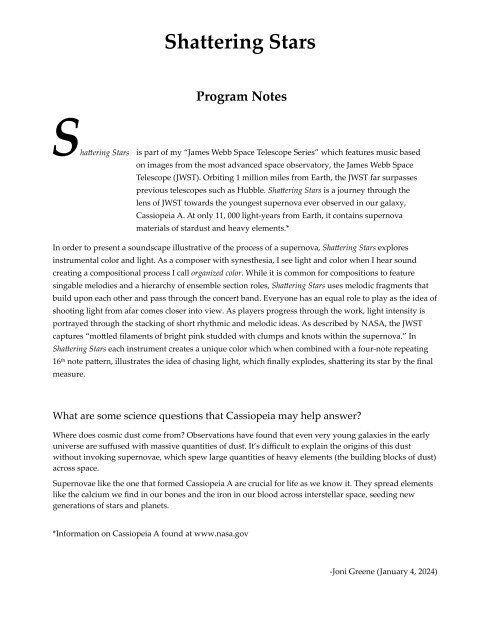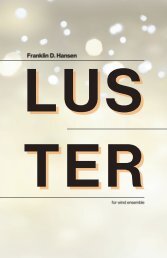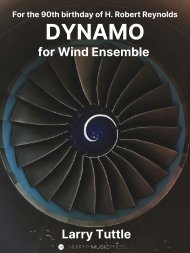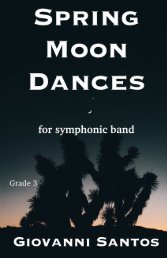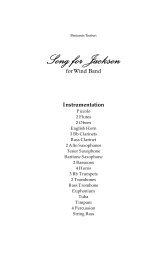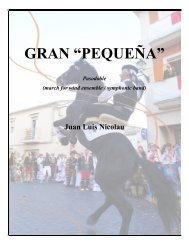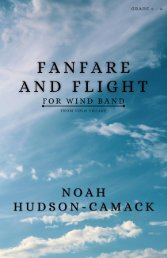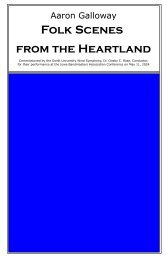Shattering Stars.Score
You also want an ePaper? Increase the reach of your titles
YUMPU automatically turns print PDFs into web optimized ePapers that Google loves.
<strong>Shattering</strong> <strong>Stars</strong><br />
Program Notes<br />
<strong>Shattering</strong> <strong>Stars</strong><br />
is part of my “James Webb Space Telescope Series” which features music based<br />
on images from the most advanced space observatory, the James Webb Space<br />
Telescope (JWST). Orbiting 1 million miles from Earth, the JWST far surpasses<br />
previous telescopes such as Hubble. <strong>Shattering</strong> <strong>Stars</strong> is a journey through the<br />
lens of JWST towards the youngest supernova ever observed in our galaxy,<br />
Cassiopeia A. At only 11, 000 light‐years from Earth, it contains supernova<br />
materials of stardust and heavy elements.*<br />
In order to present a soundscape illustrative of the process of a supernova, <strong>Shattering</strong> <strong>Stars</strong> explores<br />
instrumental color and light. As a composer with synesthesia, I see light and color when I hear sound<br />
creating a compositional process I call organized color. While it is common for compositions to feature<br />
singable melodies and a hierarchy of ensemble section roles, <strong>Shattering</strong> <strong>Stars</strong> uses melodic fragments that<br />
build upon each other and pass through the concert band. Everyone has an equal role to play as the idea of<br />
shooting light from afar comes closer into view. As players progress through the work, light intensity is<br />
portrayed through the stacking of short rhythmic and melodic ideas. As described by NASA, the JWST<br />
captures “mottled filaments of bright pink studded with clumps and knots within the supernova.” In<br />
<strong>Shattering</strong> <strong>Stars</strong> each instrument creates a unique color which when combined with a four‐note repeating<br />
16 th note pattern, illustrates the idea of chasing light, which finally explodes, shattering its star by the final<br />
measure.<br />
What are some science questions that Cassiopeia may help answer?<br />
Where does cosmic dust come from? Observations have found that even very young galaxies in the early<br />
universe are suffused with massive quantities of dust. It’s difficult to explain the origins of this dust<br />
without invoking supernovae, which spew large quantities of heavy elements (the building blocks of dust)<br />
across space.<br />
Supernovae like the one that formed Cassiopeia A are crucial for life as we know it. They spread elements<br />
like the calcium we find in our bones and the iron in our blood across interstellar space, seeding new<br />
generations of stars and planets.<br />
*Information on Cassiopeia A found at www.nasa.gov<br />
‐Joni Greene (January 4, 2024)


